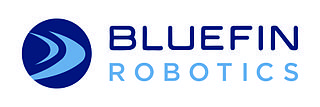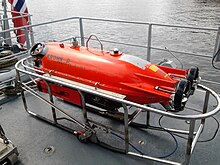
Supercavitation is the use of cavitation effects to create a bubble of gas or vapor large enough to encompass an object travelling through a liquid, greatly reducing the skin friction drag on the object and enabling high speeds. Current applications are mainly limited to projectiles or fast supercavitating torpedoes, and some propellers, but in principle the technique could be extended to include entire vehicles. Chinese and the US Navy are reportedly working on supercavitating submarines.

USS Hartford (SSN-768), a Los Angeles-class submarine, is the second ship of the Navy to be named for Hartford, Connecticut. The contract to build her was awarded to the Electric Boat Division of General Dynamics Corporation in Groton, Connecticut on 30 June 1988 and her keel was laid down on 22 February 1992. She was launched on 4 December 1993 sponsored by Laura O'Keefe, wife of former Secretary of the Navy Sean O'Keefe, and commissioned on 10 December 1994, with Commander George Kasten in command.
The AN/BLQ-11 autonomous unmanned undersea vehicle is a torpedo tube-launched and tube-recovered underwater search and survey unmanned undersea vehicle (UUV) capable of performing autonomous minefield reconnaissance as much as 200 kilometers (120 mi) in advance of a host Los Angeles-, Seawolf-, or Virginia-class submarine.
Unmanned underwater vehicles (UUV), sometimes known as underwater drones, are any vehicles that are able to operate underwater without a human occupant. These vehicles may be divided into two categories, remotely operated underwater vehicles (ROVs), which are controlled by a remote human operator, and autonomous underwater vehicles (AUVs), which operate independently of direct human input. The latter category would constitute a kind of robot.
GM Defense is a division of General Motors providing military products.

The RG-33 is a mine-resistant light armored vehicle initially designed by BAE Systems Land Systems South Africa a South African subsidiary of BAE Systems. BAE Systems in the US extensively modified it with additional protection, new power train and suspension systems. It was built in a number of locations including York, Pennsylvania. It was one of several vehicles being fielded by the US Armed Forces in Iraq under the MRAP program.

The Type 925 Dajiang (大江) is a type of naval auxiliary ship belonging to the People's Republic of China. Each ship is usually equipped with up to two Type 7103 DSRV class Deep Submergence Rescue Vehicles (DSRVs). The lead ship of the Dajiang class is the Changxingdao. The Type 925 is a submarine tender that can also be used as a submarine rescue ship, and hence, it is designated as a submarine support ship by Chinese.

Iveco LMV is a 4WD tactical vehicle developed by Iveco, and in service with several countries. After its adoption by the Italian Army under the name VTLM Lince (Lynx)(Veicolo-Tattico-Leggero-Multiruolo/Light-Tactical-Multirole-Vehicle), it won the FCLV competition of the British Army as the Panther and has been adopted by the armies of Albania, Austria, Belgium, Norway, Russia and Spain. The Italian Army took vehicles to both Afghanistan and Lebanon. In Afghanistan, Lince vehicles have saved passengers' lives in several attacks with IEDs.

The Gowind design is a family of steel monohull corvettes developed since 2006 by Naval Group, formerly known as DCNS, to conduct missions in littoral zone such as anti-submarine warfare (ASW). The Gowind family includes vessels with lengths from 85 m to 102 m and displacement from 1,000 t to 2,500 t.

An underwater firearm is a firearm designed for use underwater. They are in the arms inventories of many nations. A common feature of underwater firearms or needleguns is that they fire flechettes or spear-like bolts instead of standard bullets. These may be fired by pressurised gas.

The Lerici class is a class of minehunters constructed by Intermarine SpA and owned and operated by the Italian Navy. The class incorporates two subclasses: the first four ships are referred to specifically as the first series of the Lerici class, while eight more ships produced to a slightly modified design are known as "second series Lericis" or as the Gaeta class.
The Seaglider is a deep-diving Autonomous Underwater Vehicle (AUV) designed for missions lasting many months and covering thousands of miles. In military applications the Seaglider is more commonly referred to as an Unmanned Underwater Vehicle (UUV).
The Columbia Group is a U.S. defense contractor serving the U.S. government, as well as the commercial sector, domestic and international, specializing in cyber, acquisition, logistics management, C4SI, ship design, marine engineering & fabrication, human performance strategy, training, financial management and information technology. It is headquartered in Washington, DC, and has offices in Alexandria, Fairfax, Quantico, Norfolk Virginia, Lawton, Oklahoma, as well as multiple support sites in over 30 states, military bases, and international sites. It celebrated its 50th year in business in 2017.

The REMUS series are autonomous underwater vehicles (AUVs) made by the Woods Hole Oceanographic Institution and designed by their Oceanographic Systems Lab (OSL). More recently REMUS vehicles have been manufactured by the spinoff company Hydroid Inc. a wholly owned subsidiary of Kongsberg Maritime. The series are designed to be low cost, they have shared control software and electronic subsystems and can be operated from a laptop computer. They are used by civilians for seafloor mapping, underwater surveying, and search and recovery as well as by several navies for mine countermeasures missions.
The Knifefish is an autonomous unmanned underwater vehicle (UUV) under development by General Dynamics Mission Systems and Bluefin Robotics for the United States Navy. It is a propeller-driven minesweeping robot designed to replace the Navy's trained dolphins and sea lions after the retirement of the 50-year-old Marine Mammal Program in 2017. The Knifefish was first unveiled at a Navy exposition in April 2012, and is intended to operate in concert with the Navy's littoral combat ships (LCS) as part of a specialised counter-mine system. The Navy plans to begin sea trials of the Knifefish in 2015, and to enter it into active service in 2017.

Bluefin Robotics is an American robotics company, headquartered in Quincy, Massachusetts, which specialises in the design and manufacture of military and civilian autonomous underwater vehicles (AUVs) and related technology. The company was founded in 1997, and became a wholly owned subsidiary of Battelle Memorial Institute in 2005. Its products include the Bluefin-21 underwater search robot and its military derivative, the Knifefish minesweeping AUV, which entered service with the United States Navy in 2017. Bluefin has furthermore been involved in the development of several advanced Navy projects, including the Black Pearl AUV and the Proteus optionally-manned submersible.

Anteo is a submarine rescue ship of the Italian Navy, assigned to Raggruppamento Subacquei ed Incursori "Teseo Tesei" (COMSUBIN). ITS Anteo is the third ship to bear this name in the Italian Navy. The ship’s design was developed by the "Ufficio Navi Speciali del Reparto Progetti Navi", according to the guidelines provided by the Navy General Staff. The ship was built at Cantiere Navale Breda di Porto Marghera and commissioned to the Italian Navy on 31 July 1980.

The following outline is provided as an overview of and topical guide to underwater diving:

The following index is provided as an overview of and topical guide to underwater diving:















